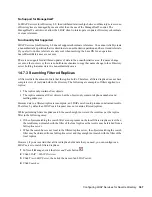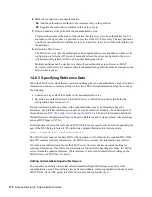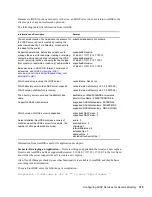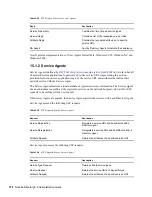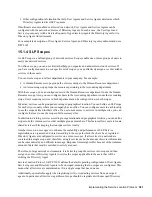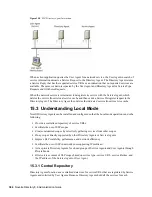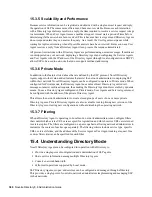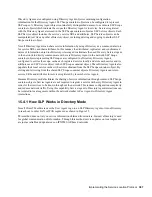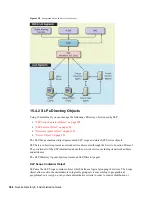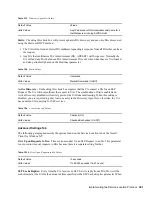
Implementing the Service Location Protocol
381
no
vd
ocx
(e
n)
6 Ap
ril 20
07
Other configuration information that help User Agents and Service Agents determine which
Directory Agents to direct SLP requests.
If multicasts are not enabled or allowed in a network, User Agents and Service Agents can be
configured with the network addresses of Directory Agents. In such a case, the User Agent and
Service Agent query (with a Service Request of type directory-agent) the Directory Agent for its
Directory Agent Advertisement.
For a complete description of User Agent, Service Agent, and Directory Agent synchronization, see
RFC 2165.
15.1.4 SLP Scopes
An SLP scope is a defined group of network services. Scopes enable one or more groups of users to
easily use network services.
To define a scope, you can use criteria that help you organize and administer network services. If
you have configured users to use a specific set of scopes, you can effectively assign a set of available
services to those users.
You can create scopes to reflect departments in your company. For example:
A Human Resources scope groups the services unique to the Human Resources department
An Accounting scope groups the resources pertaining to the Accounting department
With these scopes, you can configure users in the Human Resources department to use the Human
Resources scope. Also, you can configure users in the Accounting department to use the Accounting
scope. Users requiring services in both departments can be configured to use both scopes.
Likewise, services can be grouped according to geographical location. You can define an SLP scope
for each city or country where your company has an office. You can configure users in each locality
to use the scope defined for their office. If a user needs access to services in multiple sites, you can
configure that user to use the scopes of all necessary sites.
In addition to dividing services according to organizational and geographical criteria, you can define
scopes to hold common services that multiple groups must share. This feature allows users to locate
shared services while keeping their unique services locally.
Another reason to use scopes is to enhance the scalability and performance of SLP. Service
registrations are organized and stored according to the scope in which they have been registered.
Directory Agents are configured to service one or more scopes. If all services in a network are
contained in a single scope, and, therefore, a single service cache, the amount of service information
can become unwieldy and difficult to manage. Response times might suffer because of the immense
amount of data that must be searched to satisfy a request.
Therefore, in large network environments, it is better to group the services into scopes and then
assign one or more Directory Agents to service the scopes applicable to the users that will be
utilizing the Directory Agent.
Service Location Protocol 1 (RFC 2165) defines the default operating configuration of User Agents,
Service Agents, and Directory Agents to be unscoped, meaning that no scopes are configured. This
means that all services are maintained as if in a single scope that has no name.
Additionally, special rules apply when registering with, or requesting services from, unscoped
agents. In particular, all services regardless of scope should be registered with unscoped Directory
Summary of Contents for EDIRECTORY 8.8 SP2
Page 4: ...novdocx en 6 April 2007...
Page 116: ...116 Novell eDirectory 8 8 Administration Guide novdocx en 6 April 2007...
Page 128: ...128 Novell eDirectory 8 8 Administration Guide novdocx en 6 April 2007...
Page 255: ...256 Novell eDirectory 8 8 Administration Guide novdocx en 6 April 2007...
Page 406: ...408 Novell eDirectory 8 8 Administration Guide novdocx en 6 April 2007...
Page 563: ...566 Novell eDirectory 8 8 Administration Guide novdocx en 6 April 2007...
Page 573: ...576 Novell eDirectory 8 8 Administration Guide novdocx en 6 April 2007...
Page 601: ...604 Novell eDirectory 8 8 Administration Guide novdocx en 6 April 2007...

